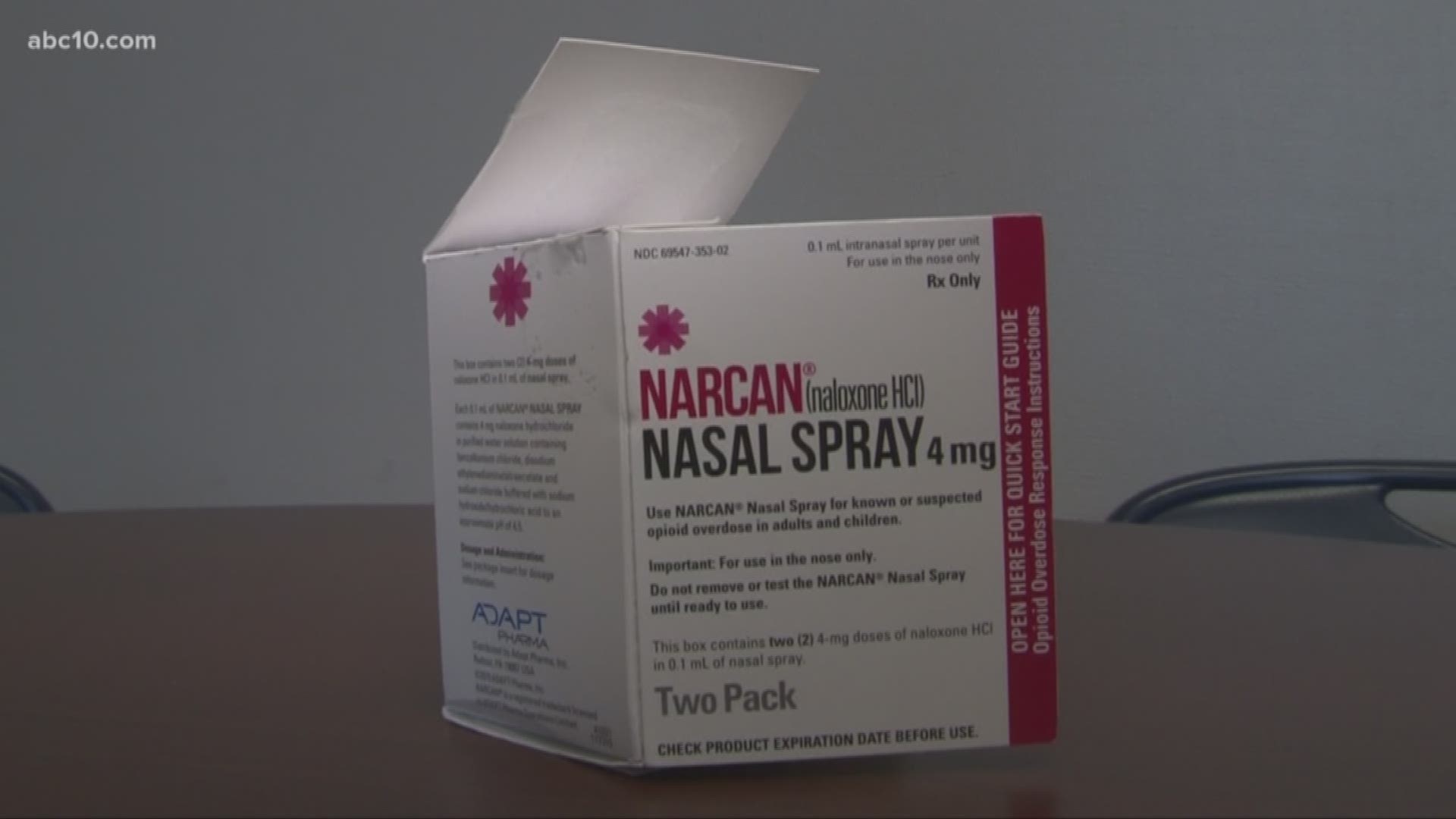In 2017, the San Joaquin County Public Health Department initiated a state grant-funded program for free distribution of the drug Naloxone, more commonly known as Narcan.
Narcan, which is used for life-saving efforts during drug overdoses resulting from opioids like heroin, became a point of interest recently when singer Demi Lovato was treated with Narcan for an overdose that hospitalized her.
The county has issued over 400 free Narcan kits over the last year to first-responders, addicts and friends of addicts alike. Fifty-seven San Joaquin County residents died in opioid-related overdoses the year before the program began, which is the highest rate among surrounding counties.
Many people voiced their concerns online, asking why the costly drug is given to people with addictions for free when the high price of other life-saving medications, such as EpiPens and insulin, can drive families to bankruptcy and potentially death.
But according to county and state data, the proliferation of various epidemics, including substance abuse, diabetes and mental health conditions, might be more complicated and intertwined than can be seen on the surface.
“Everything impacts health, and health impacts everything. It’s all interconnected,” said Tammy Evans, the director of the San Joaquin County Public Health Department.
According to county officials, while they don’t currently have any other programs that provide free medications to residents, the health department’s primary goal is to prevent premature death in the county, regardless of cause.
“Anything preventing someone from living to an old age is a public health issue,” Evans said.
In San Joaquin County, the top health issues affecting the county’s population, according to health and survey data, include obesity and diabetes, violence and injury, substance abuse, mental health, and, surprisingly, education. The information, published in the 2016 San Joaquin County Community Health Needs Assessment, shows that economics and education, in addition to access, are directly linked to a community’s overall health.
“If a person doesn’t have a good education, they’ll be less likely to have adequate jobs, housing, healthcare, everything,” Evans said. “If they have a need in one area, they probably will have a need in another.”
Which is why the county’s approach to improving all epidemics is multi-pronged but has a primary focus on education, according to Evans. The Narcan program specifically, which is funded by the Sutter Gould Foundation and uses no county financial or staff resources, also has seen significant progress with its education initiatives targeting both healthcare providers and community members.
“[Opioid addicts] are not normal substance abusers,” Evans said. “They’re traditional people with traditional jobs. It’s a completely different population.”
Evans indicated that many opioid addicts are blue-collar workers who are hurt on the job and over-prescribed medications for pain by doctors. Her department has specifically worked with doctors and healthcare providers to be more intentional with prescriptions of opioids, for example, prescribing only a few days’ worth of medication rather than a month’s worth.
Additionally, the Narcan program works to provide education for community members as well.
“California is way behind in the public’s understanding of opioid prevention,” Evans said. “Many people think an overdose is a medical responder’s responsibility. But if someone has Narcan and understands how to use it, those two minutes can mean the difference in saving a life.”
According to government data, up to 29 percent of patients prescribed opioids for chronic pain misuse, and 80 percent of people who use heroin, first misused prescription opioids. The federal government has also declared a public health emergency in response to the national opioid epidemic. This epidemic has cost the country over $78 billion in healthcare, lost productivity, addiction treatment and criminal justice.
“It’s easy for people who haven’t been affected by something directly to be critical,” Evans said. “But they haven’t had exposure to the magnitude of the problem.”
In California, about 50 to 70 in every 100 people are currently prescribed an opioid medication. Not all of those prescribed opioids become addicted, and the rates are much higher in other states. But the issue is prolific and becoming more deadly with the introduction of highly concentrated, synthetic opioids like fentanyl.
While the county won’t have data about the effectiveness of the program until the end of their two-year grant in 2019, the department’s focus, first and foremost, is to save lives.
“PHS does not discriminate, nor do we pass judgment,” county officials said. “We provide services to all residents. We hope that each person saved from an overdose will seek treatment, but in the meantime, this is an attempt to reduce harm.”

